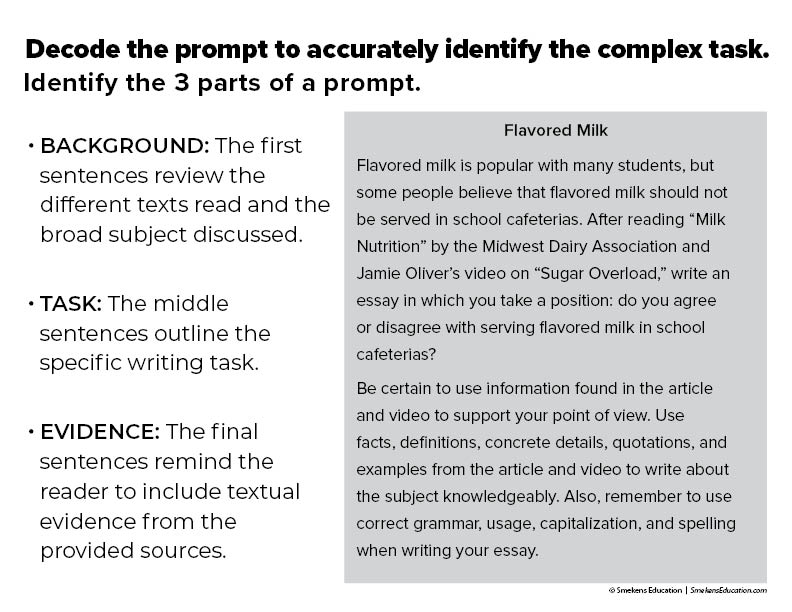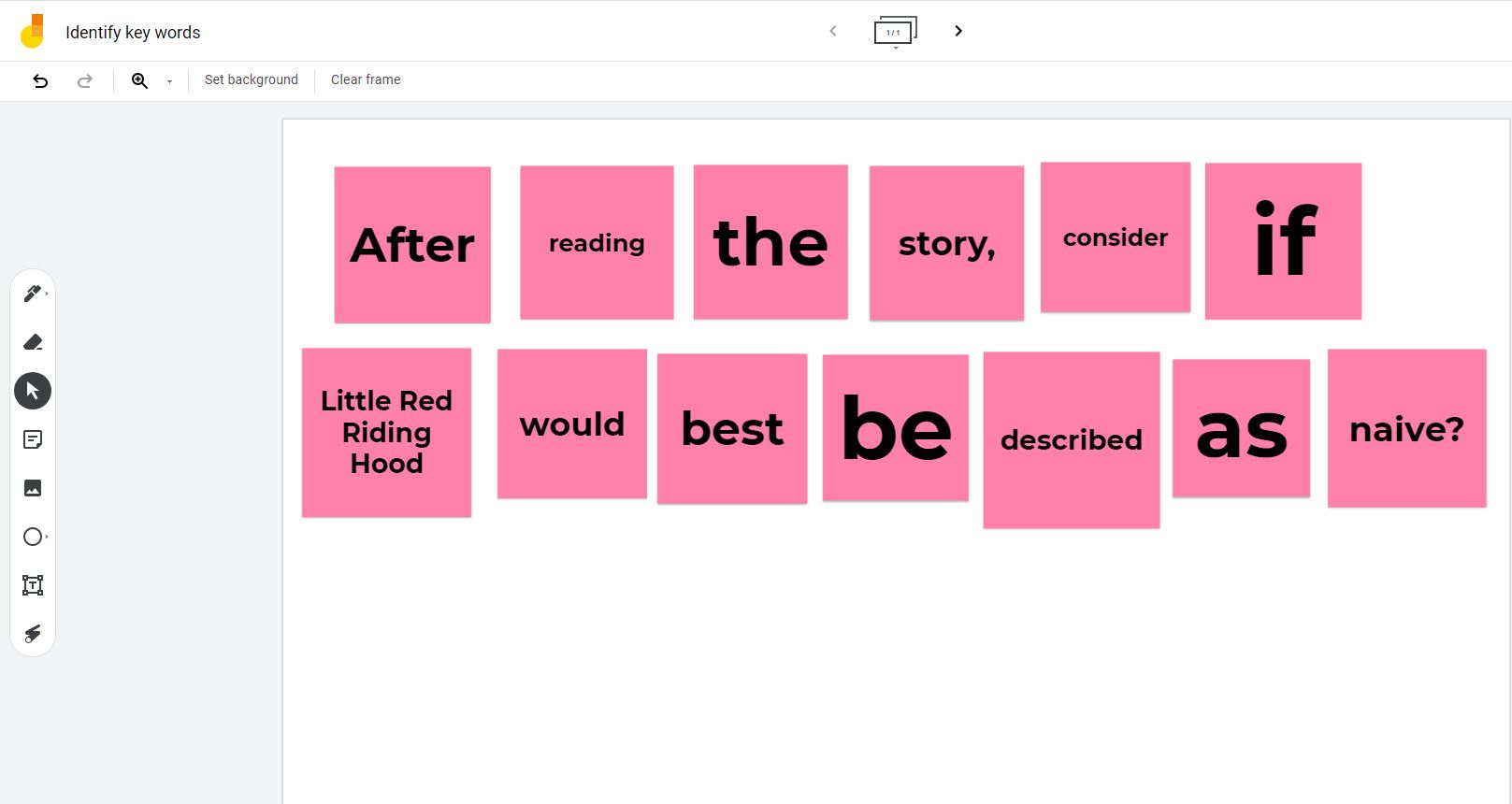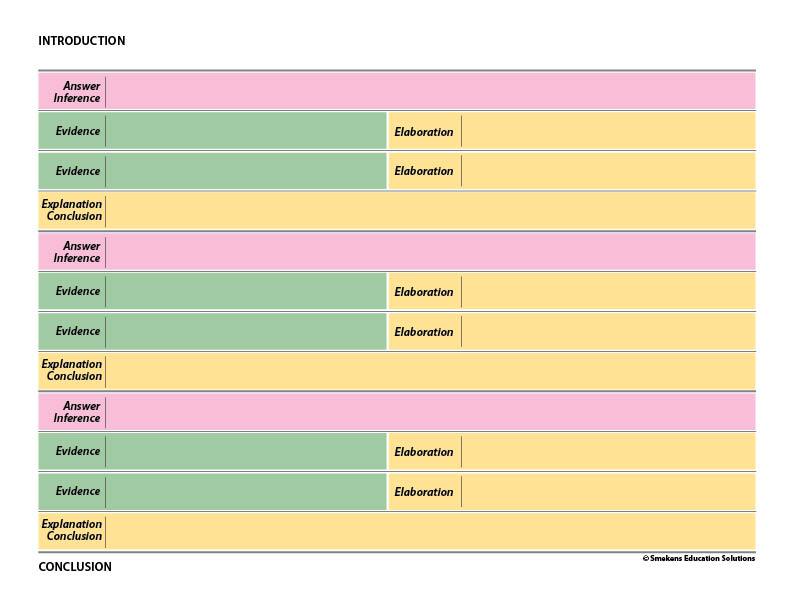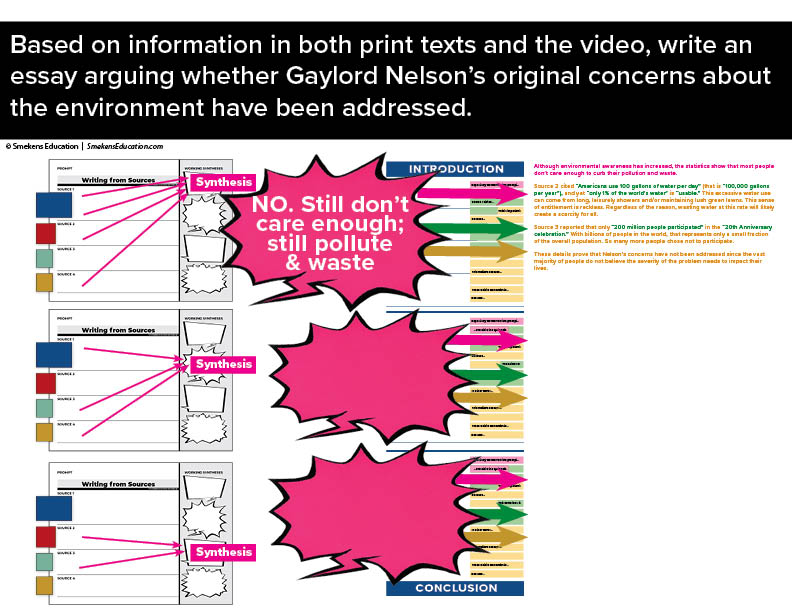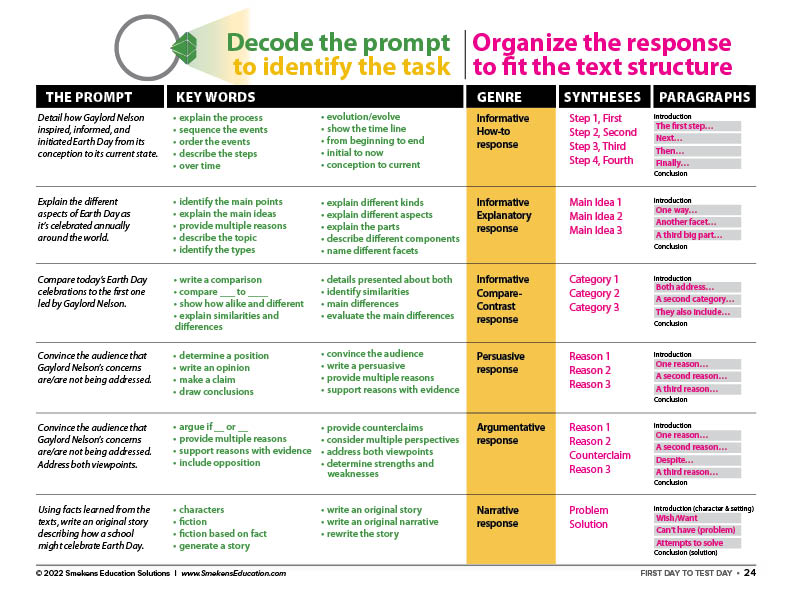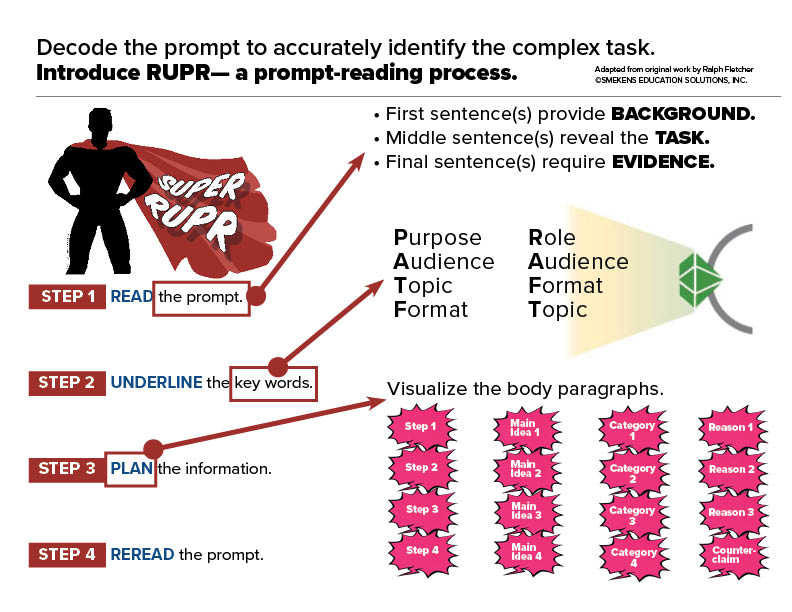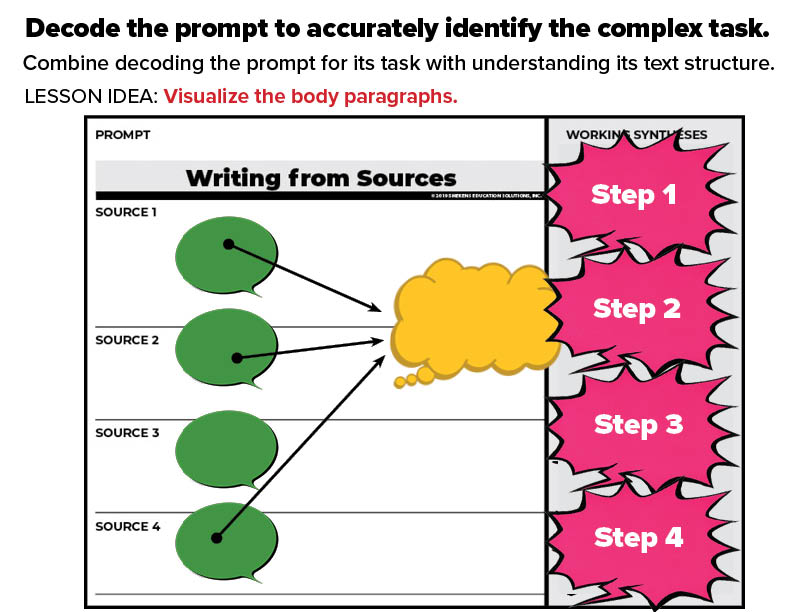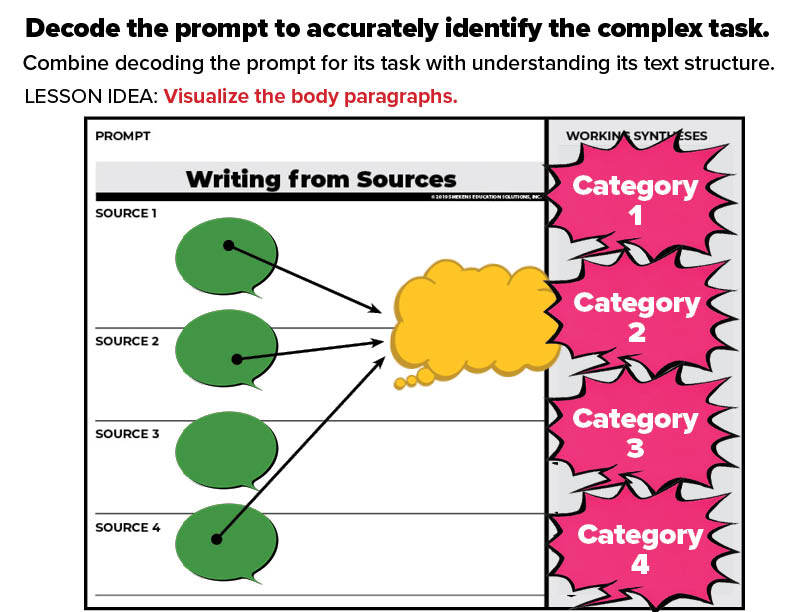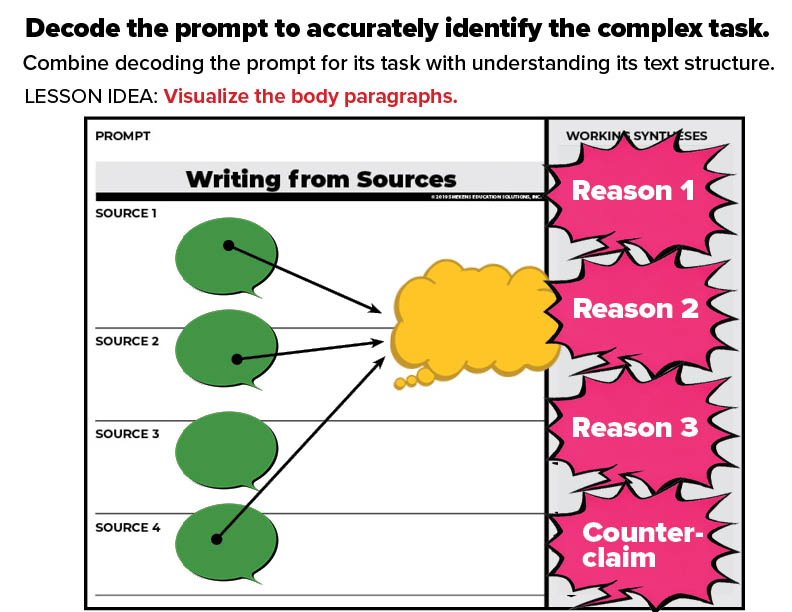READERS WRITE
about texts
Extended response: Skills 13-20
Skill 13: Readers accurately decode prompts to determine the read-write task.
Decode the Prompt
mini-lesson
Mini-Lesson Resources
PDF | Smartboard
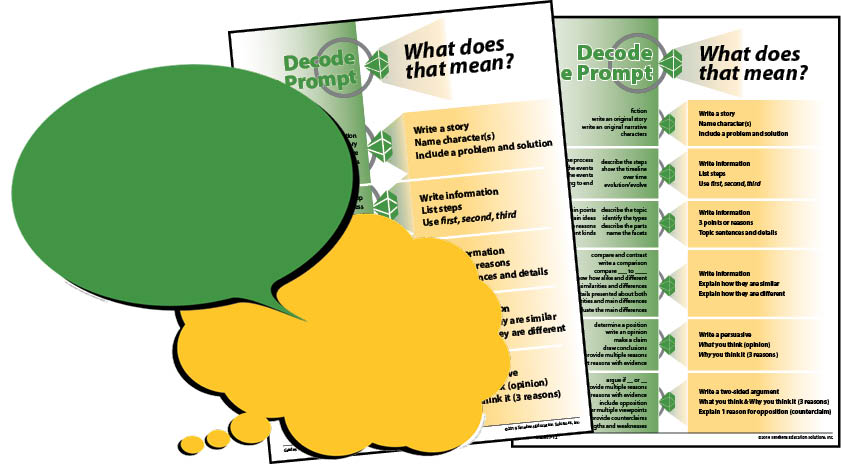
Connected to Reader Voices
Grades 2-6 | Grades 7-12
The Writing-About-Reading Frames include over two dozen typical prompts seen on standardized assessments.
Select the appropriate tool when preparing for an extended reading response.

Both a literary analysis and argumentative analysis include the reader evaluating a single text based on multiple factors.
PDF | Google Slide | Jamboard | Figjam
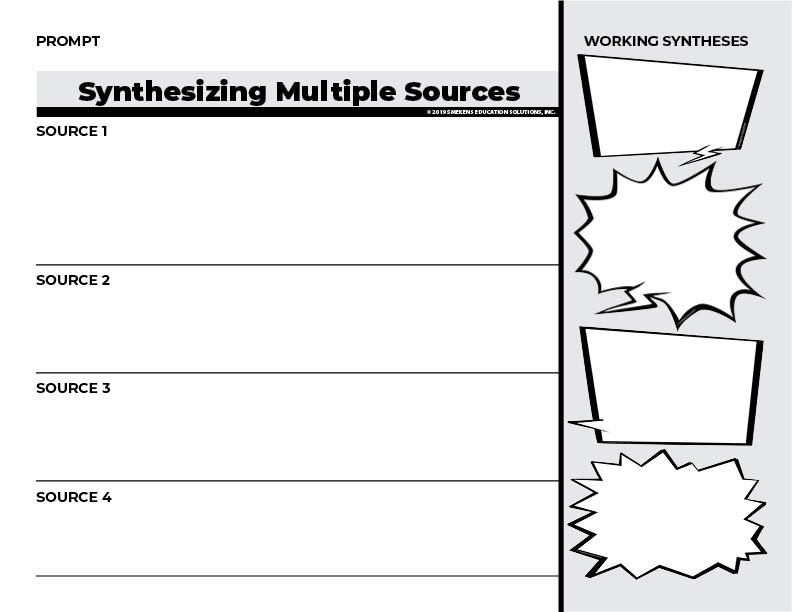
Synthesize multiple ideas from all the texts. Each synthesis needs to be based on evidence from at least two sources.
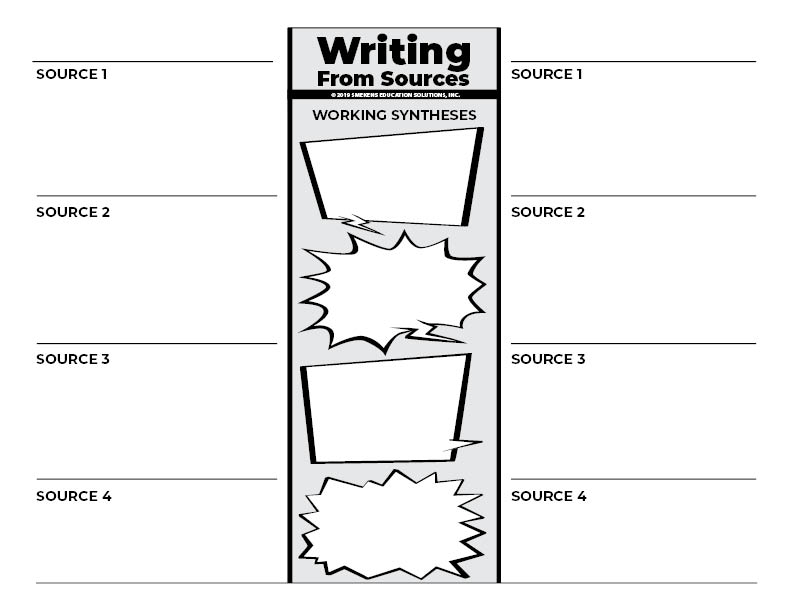
Synthesize reasons per perspective when preparing to write a persuasive or argumentative response.
Skill 14: Stretch each synthesis into a topic sentence.
Review Skill 2 from the basic constructed response. The process for stretching a synthesis works the same.

MAAM Google Slide | Jamboard | Figjam | PDF
RACE Google Slide | Jamboard | Figjam | PDF
CER Google Slide | Jamboard | Figjam | PDF
Skills 15 & 17: Readers stack constructed responses in body paragraphs.
The Yes, MA’AM strategy can be adapted
to fit the requirements of an extended reading response.
Stacked Constructive Response Paragraphs | Earth Day
Skill 16: Readers include specific citations for text evidence.
Skill 18: Visualize body paragraphs based on genre and text structure.
Skills 19-20: Readers generate an academic introduction and conclusion.
Rework a prompt to serve as the introductory paragraph
in an extended-reading response.
This Teaching Channel video introduces the parts of an essay, including how to rework the prompt to serve as the introduction.

